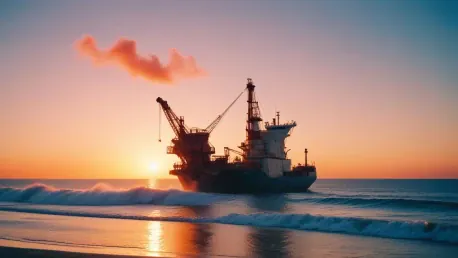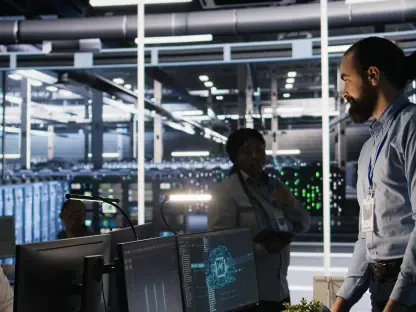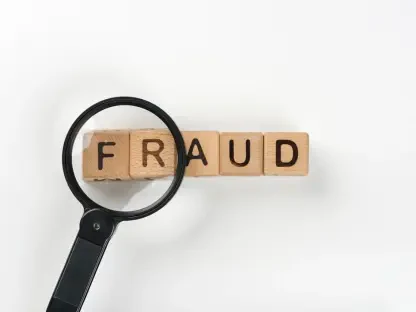Sebastian Stephen, a lifelong fisherman from Kollam, India, has witnessed drastic changes in the fishing industry, most recently magnified by a controversial offshore mining project proposed by Prime Minister Narendra Modi’s government. With a stroke leaving him partially paralyzed, Stephen and his fellow fishermen face dwindling catches due to rising sea temperatures and are now grappling with financial strain as mining looms on their horizon. Stephen joins us to discuss his experiences, the environmental impacts of mining, and the community’s staunch resistance.
Can you tell us about your history in the fishing industry in Kollam?
I’ve been fishing off Kollam’s coast for as long as I can remember. The sea has always been my livelihood, teaching me the intricacies of our ocean’s ecosystem. Each day brought its own challenges and rewards, and I worked tirelessly to support my family and community through fishing.
How has your stroke impacted your fishing activities?
The stroke I suffered two years ago was a significant life-altering event. It left me partially paralyzed, meaning I can’t personally operate my boat anymore. I had to hire others to run my motorized boat, which has added financial strain during times when our catches are already dwindling. It’s been tough to adjust.
What changes have you observed in fish populations along India’s southwestern coast?
Over recent years, we’ve observed a noticeable decline in fish populations. Rising sea surface temperatures and extreme weather events disrupt the availability of fish food and their survival rates. This, coupled with overfishing, has severely impacted our catches and our way of life.
How have rising sea surface temperatures affected your catch?
Rising sea temperatures have altered the ecosystem that the fish depend on. Changes in water temperature affect the marine food chain, reducing the number of fish available near our coast. This unpredictability means we often return with smaller catches, making it hard for fishers to sustain their livelihoods.
Can you discuss the financial challenges faced by fishermen currently?
Fishermen today face immense financial challenges. With smaller catches, income has dropped significantly. Many have had to take loans to cover costs, plunging them into debt. The industry’s instability has led to severe economic stress within our communities.
What were your initial reactions to the offshore mining announcement in November?
When the offshore mining announcement came in November, my reaction was one of shock and fear. The potential for environmental damage to our coastal waters and the further depletion of our already struggling fish stocks was alarming. It felt like our concerns were completely ignored.
How do you believe the mining will impact fishing stocks and the coastal environment?
The mining will likely devastate our fishing stocks by destroying essential habitats like sand banks and rocky reefs. These areas are crucial for the reproduction and survival of several marine species we rely on. Moreover, mining could cause significant coastal erosion and damage the marine ecosystem, with long-term negative effects on biodiversity.
What actions have the Kerala fishing communities taken to protest the mining plans?
Our community has been vocal in our opposition. We have organized continuous protests, highlighting the environmental risks and economic consequences of offshore mining. We want to protect our livelihoods and preserve the marine environment for future generations.
Can you describe the daylong strike on February 27?
The strike on February 27 was a unified show of strength by the Kerala fishing communities. We halted all fishing activities for a day to draw attention to our protests. It was our way of demonstrating the deep concern and the potential impact on the local economy if the mining project goes forward.
What was the significance of the resolution passed by the Kerala state assembly on March 4?
The unanimous resolution passed by the Kerala state assembly on March 4 was a crucial political statement. It underscored the collective opposition from all local political parties to the federal government’s mining plans. It represented a formal and unified stance of the state’s commitment to protecting our coastal environment and livelihoods.
Can you tell us more about the march in New Delhi on March 12?
The march in New Delhi was significant for raising national awareness. Led by the Kerala Fisheries Coordination Committee, it involved 18 members of parliament who vocally opposed the mining initiative. It showcased solidarity among political figures and highlighted the gravity of our situation on a national platform.
What concerns did you highlight in your letter to Prime Minister Modi?
In my letter to Prime Minister Modi, I emphasized the socio-economic impact on millions of coastal community members. I urged for a thorough consultation with stakeholders and highlighted the long-term damage that indiscriminate mining could cause to our marine environment and livelihoods.
Can you explain the importance of the sand bank near Kollam for marine life?
The sand bank near Kollam is an essential marine habitat, supporting a variety of species like shrimp, octopus, and fish. It’s a breeding and feeding ground that ensures the vitality of our fishing stocks. The sand banks contribute significantly to the local marine biodiversity that our fishing industry depends on.
How do the trawlers and motorized boats in Kollam depend on the sand bank?
Many trawlers and motorized boats, including my own, depend on the rich grounds provided by the sand bank for sustaining their catches. It’s a critical area where fish accumulate, offering fertile fishing grounds that support thousands of livelihoods in Kollam.
What worries do fishers have about the potential destruction of rocky reefs?
Fishers are deeply concerned that offshore mining will destroy rocky reefs, which are crucial for coastal protection and marine biodiversity. These reefs support coral species and act as natural barriers against erosion, ensuring that our coastal areas remain habitable and resilient.
How did the reefs protect Kollam during the 2004 tsunami?
The reefs played a crucial role during the 2004 tsunami by absorbing significant wave energy, reducing the impact on our coast. Their presence saved numerous lives and properties by acting as natural fortifications against such devastating forces.
What are the current issues with coastal erosion in Vizhinjam?
In Vizhinjam, there has been significant coastal erosion, which many attribute to the new port. Though some studies claim no direct connection, the visible erosion has spooked fishers in Kollam, fueling fears that similar effects could occur if offshore mining disrupts the coastal landscape.
How do you respond to the federal mining ministry’s claim that the proposed sites are outside active fishing zones?
Even though the proposed sites lie outside the defined territorial waters, our fishing activities extend far beyond these boundaries due to advanced techniques and equipment. The reality is that these zones are well within our active fishing areas, making the ministry’s claims seem dismissive of ground realities.
What findings did the University of Kerala’s report reveal about the potential impact of mining?
The University of Kerala’s report revealed that the mining would significantly harm the rocky reefs and other critical marine habitats. It highlighted that increased turbidity from sand mining would reduce light penetration, affecting phytoplankton productivity, which is essential for the marine food chain and overall ecosystem health.
What ecological risks does sea sand mining pose according to the report?
The report indicates that sea sand mining will lead to increased clay and silt, raising water turbidity and disrupting the delicate balance of the marine ecosystem. This can result in reduced productivity, loss of biodiversity, and the destruction of crucial fish habitats.
How might mining activities affect phytoplankton productivity in the region?
Mining can increase sedimentation and turbidity, reducing light penetration necessary for phytoplankton photosynthesis. Phytoplankton are primary producers, forming the base of the marine food web; their decline would ripple through the ecosystem, impacting all marine life dependent on them.
How does the mining initiative fit into India’s larger National Critical Mineral Mission?
The offshore mining initiative ties into the National Critical Mineral Mission, aiming to secure necessary resources for India’s green energy transition and economic self-sufficiency. The government views it as a step towards reducing dependency on imports of critical minerals essential for various industries.
Why are critical minerals deemed vital for India’s green energy transition?
Critical minerals like lithium, cobalt, and nickel are vital components for renewable energy technologies, batteries, and electronic devices. They are essential for transitioning to cleaner energy sources and achieving India’s long-term goals of reducing carbon emissions and energy independence.
How dependent is India on imports for critical minerals like lithium and cobalt?
India is heavily reliant on imports for critical minerals, with near-total dependency for items like lithium and cobalt. While there is some domestic production of rare earth elements, it is insufficient to meet the growing demands of the country’s renewable energy and technological needs.
What are the expected timelines for achieving benefits from the National Critical Mineral Mission?
Realistically, achieving the benefits from the Critical Mineral Mission will take much longer than the projected seven years. The process of exploration, clearances, and the establishment of processing industries is a lengthy one, potentially spanning 15 to 20 years before substantial benefits are realized.
What is your perspective on balancing speed and caution in the mining sector?
Balancing speed and caution is crucial. While there is an urgent need for critical minerals to support industrial growth and the green transition, it’s vital to ensure that mining activities do not irreparably harm the environment. Rushing into mining without proper safeguards could have detrimental long-term ecological impacts.
Why are construction sand resources becoming increasingly important?
With rapid urbanization and infrastructure growth, construction sand has become a critical resource for the building industry. Its importance is rising as nations develop, necessitating careful management to avoid destructive environmental impacts.
What do you think about calls for a moratorium on offshore mining by several countries?
I support the calls for a moratorium on offshore mining. It’s a prudent step to thoroughly study and understand the environmental consequences before embarking on potentially harmful activities. Sustainable practices need to be identified to protect marine ecosystems.
How should the government identify sites for sea sand mining to minimize impacts?
The government should conduct extensive environmental impact assessments to identify sites where mining would have the least ecological and social effects. Engaging with local communities and scientists is crucial to make informed decisions that balance development and conservation.
What are the next steps for Kerala’s fishing community in opposing offshore mining?
We will continue our protests and raise awareness at both state and national levels. Collaborating with environmental groups, engaging with governmental bodies, and seeking legal avenues to halt these plans are all on the agenda. We will not back down until our voices are heard, and our livelihoods are safeguarded.









